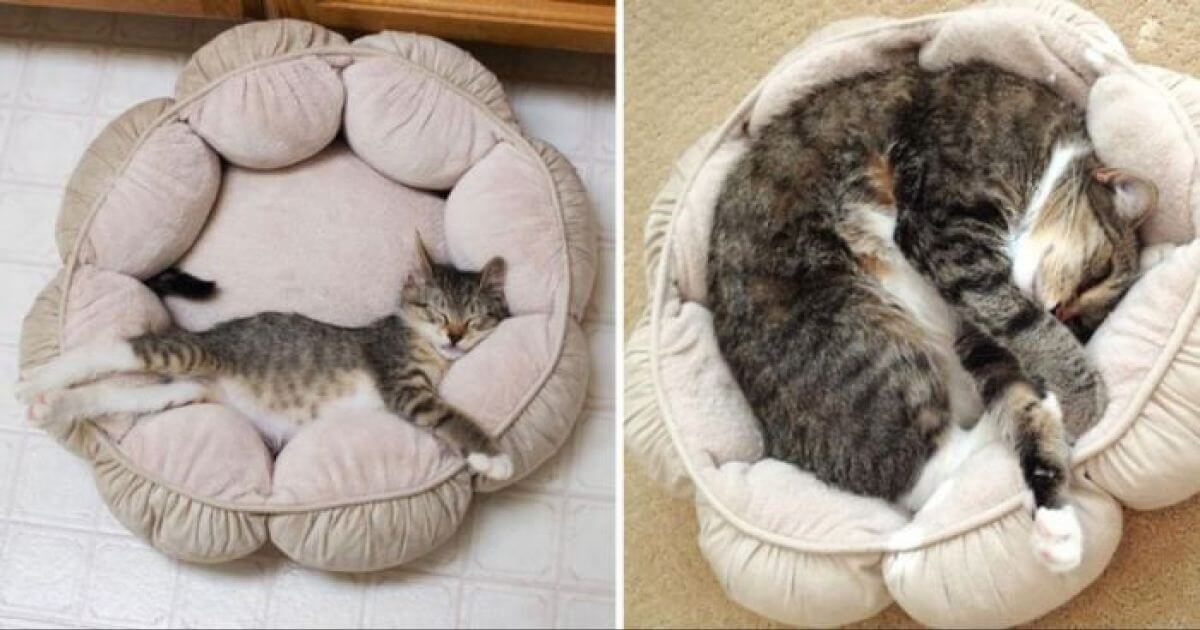Cat has natural instincts to use sand and dirt since they bury their waste. They learn them in early age from their mother. But what if you could eliminate this chore by teaching your cat to use the toilet? It will save you a lot of time and work. Training a cat to use the toilet can also save you money, since you won’t have to worry about buying litter ever again! So in this post we want to show you the steps for training a cat to use the toilet.

Follow steps below:
Part 1: Preparing for the training
1. Choose bathroom for your cat
The first step in the process is creating a designated bathroom for the cat. The bathroom in your home that your cat has easiest access to.

2. Choose a training seat
Your cat will be transitioning from his regular litter box to a training seat and eventually to the toilet. So you need a cat training seat:
– The Citi Kitty Cat Toilet Training Kit is one such training seat. The seat has four rings that can be removed to increase the size of the hole in its center. At the training completion you remove the tray altogether. Citi Kitty is a simple device that is inexpensive. It generally sells for $30.
– The Litter Kwitter is another brand of training seat. It is ideal for people looking to end litter box woes of gritty floors and frequent cleanings. Bold, confident cats 3 months of age and up are ideal candidates for potty training. The Litter Kwitter is highly convenient and it generally sells for $40 to $50.
Part 2: Training
1. Place your cat’s litter box next to the toilet and gradually raise the height of the box
Put the litter box next to the toilet so your cat grows accustomed to the new setting. There is a difference in height between the litter box, which is at ground level, and the toilet. Gradually training your cat to go up by using cardboard boxes, or stacks of newspapers or magazines raise the litter box by 3 inches each day until it’s on level with the toilet seat. It’s important not to rush your cat through this process. If your cat becomes too uncomfortable with the height of the litter box, he might stop using it.


2. Place the litter box on top of the toilet seat
If your cat successfully uses the litter box as your raise the height of the litter box is on level with the toilet seat place the litter box on top of the toilet. If it goes well, you should only need to leave the box there for three or four days.

3. Replace litter box with a training kit filled with flushable litter
Now you need to change the cat’s mind frame. It needs to stop doing its business in the box, and start doing it directly into the toilet. Once your cat is comfortably using the litter box without any accidents, it’s time to use your training seat.

4. Transition into eliminating in the toilet
Give your cat a few days to get used to eliminating in the training tray. If you’re using Citi Kitty or a similar product, gradually transition into bigger and bigger training seats. The Citi Kitty Cat Toilet Training Kit comes with multiple pieces, gradually increasing the size of the hole that is in the middle. Gradually decrease the amount of litter you’re using as well. Each time your cat eliminates in the pan, replace the litter with a slightly smaller amount than before.

5. Remove the training tray
After about two weeks of increasing the size of the hole you can remove the traning tray and remember to keep the toilet lid up so your cat can balance on the toilet seat.

Part 3: Taking precautions
1. Some advices for you when training your cats to use toilet
– Consider if toilet training is right for you and your cat. Toilet training is not for everyone. If your cat is very young, less than six months old, or already has issues using a litter box, toilet training might not be the best option. Cats who are older and are already comfortable with their litter box are easiest to toilet train. If your cat is skittish, he might struggle with litter box training. Shyer cats generally prefer to cover their feces and urine to protect themselves from potential predators. Toilet training takes time, organization, and dedication. If you’re not generally a well organized person or if you’re very busy, you might be better off sticking with litter.
– If you only have 1 bathroom in your house or don’t have an extra bathroom… you may not have the patience to do this.
– It is messy. You pretty much have to sweep up litter every day at least once a day from the floor. It’s just part of the process while the cat continues to scoop after each bowel movement. Even if the poop/pee drops directly into the toilet, your cat will still scoop. It takes time, education, and patience to litter train a cat but when your cat can use toilet, your house will be cleaner. You can save money, time and work.
– Cat poop. Once you start punching out the rings, you don’t want to use too much litter cause then the cat will scoop it all into the toilet and even though it’s “flushable,” it can cause sewage problems – even toilet paper can clog a toilet if too much is used. However, as the rings get removed and the center hole becomes bigger, the cat will start pooping directly into the toilet bowl and this will no longer be an issue.

2. Prepare for setbacks
Toilet training, even when done properly, frequently causes setbacks. If your cat is resistant to a step in the process, he might begin eliminating elsewhere. If this occurs, take a step back in toilet training and see if this helps. It’s a good idea to have a lot of cleaning supplies on hand when toilet training. In all likelihood, there will be at least one accident along the way.
 Source: Wikihow, vetstreet
Source: Wikihow, vetstreet



